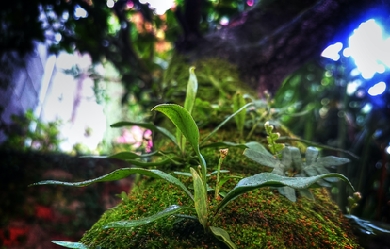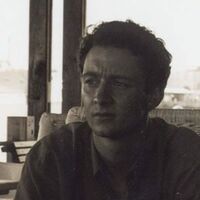
Info
Isabel II
Federico de Madrazo y Kuntz
1849
Museo Nacional del Romanticismo
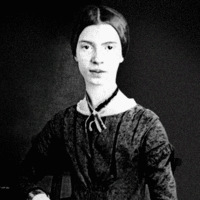
Emily Elizabeth Dickinson (December 10, 1830 – May 15, 1886) was an American poet. Little-known during her life, she has since been regarded as one of the most important figures in American poetry. Evidence suggests that Dickinson lived much of her life in isolation. Considered an eccentric by locals, she developed a penchant for white clothing and was known for her reluctance to greet guests or, later in life, to even leave her bedroom. Dickinson never married, and most friendships between her and others depended entirely upon correspondence.
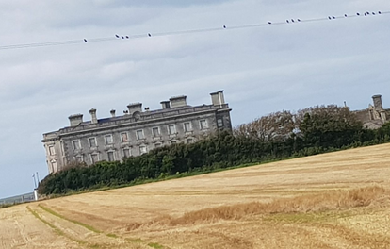
Born and raised in the subs of Dublin city, Ireland. I'm a 33year old tarot reader witch bitch. I wrote under a ghost name (alexis faye) as frankly I love poetry mine isn't viewed by anyone so i wanted to share it, and got the courage to do so when I stopped relying on other people and started to carve my own path. I write mostly depression riddled poetry. Some are about my past including being sexual assaulted, abuse at the hands of several exs and alot of my poems are actually based around my ex fiance who is actually in jail for murder. My life isnt what I wanted but I'm here now sure.
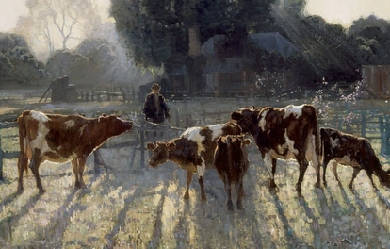
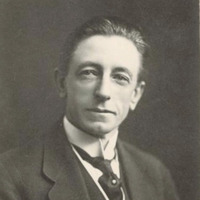
Clarence Michael James Stanislaus Dennis, better kn (own as C. J. Dennis, (7 September 1876– 22 June 1938) was an Australian poet known for his humorous poems, especially “The Songs of a Sentimental Bloke”, published in the early 20th century. Though Dennis’s work is less well known today, his 1916 publication of The Sentimental Bloke sold 65,000 copies in its first year, and by 1917 he was the most prosperous poet in Australian history. Together with Banjo Paterson and Henry Lawson, both of whom he collaborated with, he is often considered among Australia’s three most famous poets. When he died at the age of 61, the Prime Minister of Australia Joseph Lyons suggested he was destined to be remembered as the “Australian Robert Burns”. Biography C. J. Dennis was born in Auburn, South Australia. His father owned hotels in Auburn, and then later in Gladstone and Laura. His mother suffered ill health, so Clarrie (as he was known) was raised initially by his great-aunts, then went away to school, Christian Brothers College, Adelaide as a teenager. At the age of 19 he was employed as a solicitor’s clerk. It was while he was working in this job that, like banker’s clerk Banjo Paterson before him, his first poem was published under the pseudonym “The Best of the Six”. He later went on to publish in The Worker, under his own name, and as “Den”, and in The Bulletin. His collected poetry was published by Angus & Robertson. He joined the literary staff of The Critic in 1897, and after a spell doing odd jobs around Broken Hill, returned to The Critic, serving for a time c. 1904 as editor, to be succeeded by Conrad Eitel. He founded a short-lived literary paper The Gadfly. From 1922 he served as staff poet on the Melbourne Herald. C. J. Dennis is buried in Box Hill Cemetery, Melbourne. The Box Hill Historical Society has attached a commemorative plaque to the gravestone. Dennis is also commemorated with a plaque on Circular Quay in Sydney which forms part of the NSW Ministry for the Arts - Writers Walk series, and by a bust outside the town hall of the town of Laura. Books * Backblock Ballads and Other Verses (1913) * The Songs of a Sentimental Bloke (1915) * The Moods of Ginger Mick (1916) * The Glugs of Gosh (1917) * Doreen (1917) * Digger Smith (1918) * Backblock Ballads and Later Verses (1918) * Jim of the Hills (1919) * A Book for Kids (1921) (reissued as Roundabout, 1935) * Rose of Spadgers (1924) * The Singing Garden (1935) Shorter poems of note “The Austra-laise” (1908) Many shorter works were also published in a wide variety of Australian newspapers and magazines. References Wikipedia—https://en.wikipedia.org/wiki/C._J._Dennis
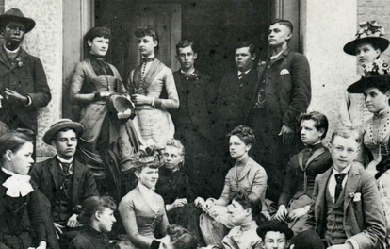
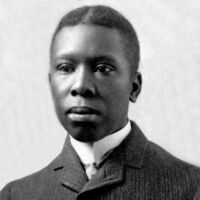
Paul Laurence Dunbar was the first African-American poet to garner national critical acclaim. Born in Dayton, Ohio, in 1872, Dunbar penned a large body of dialect poems, standard English poems, essays, novels and short stories before he died at the age of 33. His work often addressed the difficulties encountered by members of his race and the efforts of African-Americans to achieve equality in America. He was praised both by the prominent literary critics of his time and his literary contemporaries. Dunbar was born on June 27, 1872, to Matilda and Joshua Dunbar, both natives of Kentucky. His mother was a former slave and his father had escaped from slavery and served in the 55th Massachusetts Infantry Regiment and the 5th Massachusetts Colored Cavalry Regiment during the Civil War. Matilda and Joshua had two children before separating in 1874. Matilda also had two children from a previous marriage. The family was poor, and after Joshua left, Matilda supported her children by working in Dayton as a washerwoman. One of the families she worked for was the family of Orville and Wilbur Wright, with whom her son attended Dayton's Central High School. Though the Dunbar family had little material wealth, Matilda, always a great support to Dunbar as his literary stature grew, taught her children a love of songs and storytelling. Having heard poems read by the family she worked for when she was a slave, Matilda loved poetry and encouraged her children to read. Dunbar was inspired by his mother, and he began reciting and writing poetry as early as age 6. Dunbar was the only African-American in his class at Dayton Central High, and while he often had difficulty finding employment because of his race, he rose to great heights in school. He was a member of the debating society, editor of the school paper and president of the school's literary society. He also wrote for Dayton community newspapers. He worked as an elevator operator in Dayton's Callahan Building until he established himself locally and nationally as a writer. He published an African-American newsletter in Dayton, the Dayton Tattler, with help from the Wright brothers. His first public reading was on his birthday in 1892. A former teacher arranged for him to give the welcoming address to the Western Association of Writers when the organization met in Dayton. James Newton Matthews became a friend of Dunbar's and wrote to an Illinois paper praising Dunbar's work. The letter was reprinted in several papers across the country, and the accolade drew regional attention to Dunbar; James Whitcomb Riley, a poet whose works were written almost entirely in dialect, read Matthew's letter and acquainted himself with Dunbar's work. With literary figures beginning to take notice, Dunbar decided to publish a book of poems. Oak and Ivy, his first collection, was published in 1892. Though his book was received well locally, Dunbar still had to work as an elevator operator to help pay off his debt to his publisher. He sold his book for a dollar to people who rode the elevator. As more people came in contact with his work, however, his reputation spread. In 1893, he was invited to recite at the World's Fair, where he met Frederick Douglass, the renowned abolitionist who rose from slavery to political and literary prominence in America. Douglass called Dunbar "the most promising young colored man in America." Dunbar moved to Toledo, Ohio, in 1895, with help from attorney Charles A. Thatcher and psychiatrist Henry A. Tobey. Both were fans of Dunbar's work, and they arranged for him to recite his poems at local libraries and literary gatherings. Tobey and Thatcher also funded the publication of Dunbar's second book, Majors and Minors. It was Dunbar's second book that propelled him to national fame. William Dean Howells, a novelist and widely respected literary critic who edited Harper's Weekly, praised Dunbar's book in one of his weekly columns and launched Dunbar's name into the most respected literary circles across the country. A New York publishing firm, Dodd Mead and Co., combined Dunbar's first two books and published them as Lyrics of a Lowly Life. The book included an introduction written by Howells. In 1897, Dunbar traveled to England to recite his works on the London literary circuit. His national fame had spilled across the Atlantic. After returning from England, Dunbar married Alice Ruth Moore, a young writer, teacher and proponent of racial and gender equality who had a master's degree from Cornell University. Dunbar took a job at the Library of Congress in Washington, D.C. He found the work tiresome, however, and it is believed the library's dust contributed to his worsening case of tuberculosis. He worked there for only a year before quitting to write and recite full time. In 1902, Dunbar and his wife separated. Depression stemming from the end of his marriage and declining health drove him to a dependence on alcohol, which further damaged his health. He continued to write, however. He ultimately produced 12 books of poetry, four books of short stories, a play and five novels. His work appeared in Harper's Weekly, the Sunday Evening Post, the Denver Post, Current Literature and a number of other magazines and journals. He traveled to Colorado and visited his half-brother in Chicago before returning to his mother in Dayton in 1904. He died there on Feb. 9, 1906. Literary style Dunbar's work is known for its colorful language and a conversational tone, with a brilliant rhetorical structure. These traits were well matched to the tune-writing ability of Carrie Jacobs-Bond (1862–1946), with whom he collaborated. Use of dialect Much of Dunbar's work was authored in conventional English, while some was rendered in African-American dialect. Dunbar remained always suspicious that there was something demeaning about the marketability of dialect poems. One interviewer reported that Dunbar told him, "I am tired, so tired of dialect", though he is also quoted as saying, "my natural speech is dialect" and "my love is for the Negro pieces". Though he credited William Dean Howells with promoting his early success, Dunbar was dismayed by his demand that he focus on dialect poetry. Angered that editors refused to print his more traditional poems, he accused Howells of "[doing] my irrevocable harm in the dictum he laid down regarding my dialect verse." Dunbar, however, was continuing a literary tradition that used Negro dialect; his predecessors included Mark Twain, Joel Chandler Harris, and George Washington Cable. Two brief examples of Dunbar's work, the first in standard English and the second in dialect, demonstrate the diversity of the poet's production: (From "Dreams") What dreams we have and how they fly Like rosy clouds across the sky; Of wealth, of fame, of sure success, Of love that comes to cheer and bless; And how they wither, how they fade, The waning wealth, the jilting jade — The fame that for a moment gleams, Then flies forever, — dreams, ah — dreams! (From "A Warm Day In Winter") "Sunshine on de medders, Greenness on de way; Dat's de blessed reason I sing all de day." Look hyeah! What you axing'? What meks me so merry? 'Spect to see me sighin' W'en hit's wa'm in Febawary? List of works * Oak and Ivy (1892) * Majors and Minors (1896) * Lyrics of Lowly Life (1896) * Folks from Dixie (1898) * The Strength of Gideon (1900) * In Old Plantation Days (1903) * The Heart of Happy Hollow (1904) * Lyrics of Sunshine and Shadow (1905) References Paul Laurence Dunbar Website - www.dunbarsite.org/biopld.asp Wikipedia- http://en.wikipedia.org/wiki/Paul_Laurence_Dunbar
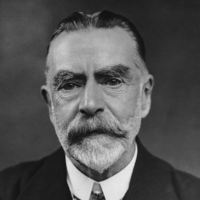
William Arthur Dunkerley (12 November 1852 – 23 January 1941) was an English journalist, novelist and poet. He was born in Manchester, spent a short time after his marriage in the US before moving to Ealing, West London, where he served as deacon and teacher at the Ealing Congregational Church from the 1880s. In 1922 he moved to Worthing in Sussex, where he became the town’s mayor.Dunkerley wrote under his own name, and also as John Oxenham for his poetry, hymn-writing, and novels. His poetry includes Bees in Amber: A Little Book of Thoughtful Verse (1913), which became a bestseller. He also wrote the poem “Greatheart”. He used the pseudonym Julian Ross for journalism. In February 1892 Robert Barr and Dunkerley founded The Idler, a monthly “general interest magazine, one of the first to appear following the enthusiastic reception of The Strand, but not a slavish imitation”. Barr and Dunkerley/Oxenham both contributed as writers. The editors were Barr and Jerome K. Jerome initially.Dunkerley had two sons and four daughters, of whom the eldest, and eldest child, Elsie Jeanette, became well known as a children’s writer, particularly through her Abbey Series of girls’ school stories. Another daughter, Erica, also used the Oxenham pen-name. The elder son, Roderic Dunkerley, had several titles published under his own name. References Wikipedia—https://en.wikipedia.org/wiki/William_Arthur_Dunkerley


"Life imitates Art, far more than Art imitates life". Hi, my name is Laila.. I love everything in Arts, I think Nature is the most beautiful thing humanity is blessed with. I love looking at the vast sky and the ocean because, for a moment it reminds me that society is small and I can create my own system/ pieces of art that doesn't need to fall in place with the norms the the system created. I write, yes, it's kind of something I kind of find solace in.. Delilah, my pen name. An entire different shade of me comes out when I am left with a notebook and pen.. Spilling ink has always been a part of me.. Uh.. I believe that kindness is the most beautiful of qualities one could have... You don't have to be rich or famous to be beautiful... You just have to have a... heart filled with empathy, love, compassion, humility and most of all.. Kindness. And then you are... Beautiful. For true beauty comes from within.. I'm 18 years old, currently a student, studying to be an English teacher. And very very nervous when it comes to speaking in front of a class... #confessions.. 2016 - There's plenty I'd like to state that just has that.. 'Wow' effect, I think the best word for this would be, Yūgen. Something about this world, this experience. To watch the Sun sink behind a hill and wait for the light of the stars. To wander into the unknown without reason or return. To watch trees sway and the colour of Autumn fall. To trace your fingers on your once so dearly beloved's hand and know all the routes on it yet... still not know that it was the last time you would touch them. To contemplate the paths of the birds across the vast sky and around the sun, and so, we have been.. Turned. xxxxx I tend to isolate myself sometimes... don't worry, Nothing is wrong, it's just the way I am, I find it more.... meaningful, as I go through different perspectives... .................( uhhhhh... Figuring out Where's Never land ... ^_^) ........ Anyway, Thank you! for going though my work... Cuidate!... Take care! Delilah Instagram : @of.blue.heart.waves.x
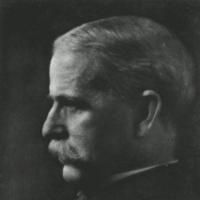
Henry Jackson van Dyke (November 10, 1852 – April 10, 1933, aged 80) was an American author, educator, and clergyman. Henry van Dyke was born on November 10 , 1852 in Germantown, Pennsylvania in the United States. He graduated from Princeton University in 1873 and from Princeton Theological Seminary, 1877 and served as a professor of English literature at Princeton between 1899 and 1923. In 1908-09 Dr. van Dyke was an American lecturer at the University of Paris. By appointment of President Wilson he became Minister to the Netherlands and Luxembourg in 1913. He was elected to the American Academy of Arts and Letters and received many other honors. Van Dyke was an "ardent foe of the annexation of the Philippines, [and] told his congregation in 1898, 'If we enter the course of foreign conquest, the day is not far distant when we must spend in annual preparation for wars more than the $180,000,000 that we now spend every year in the education of our children for peace.’” He chaired the committee that wrote the first Presbyterian printed liturgy, The Book of Common Worship of 1906. Among his popular writings are the two Christmas stories, The Other Wise Man (1896) and The First Christmas Tree (1897). Various religious themes of his work are also expressed in his poetry, hymns and the essays collected in Little Rivers (1895) and Fisherman’s Luck (1899). He wrote the lyrics to the popular hymn, "Joyful, Joyful We Adore Thee" (1907), sung to the tune of Beethoven's "Ode to Joy". He compiled several short stories in The Blue Flower (1902), named after the key symbol of Romanticism introduced first by Novalis. He also contributed a chapter to the collaborative novel, The Whole Family (1908). Among his poems is "Katrina's Sundial", the inspiration for the song, "Time Is", by the group It's a Beautiful Day on their eponymous 1969 debut album. Furthermore, the lyrics of a song — entitled "Time", sung by Mark Masri — are mostly inspired by the following quote, written by Henry van Dyke: "Time is too slow for those who wait, too swift for those who fear, too long for those who grieve, too short for those who rejoice, but for those who love — time is eternity". A biography of Van Dyke, titled Henry Van Dyke: A Biography, was written by his son Tertius van Dyke and published in 1935. List of Works: Short Stories * Among The Quantock Hills from 'Days Off And Other Digressions' * Antwerp Road * Art Of Leaving Off, The from 'Days Off And Other Digressions' * Ashes of Vengeance (half-told tale) * Beggars Under The Bush * Between The Lupin And The Laurel from 'Days Off And Other Digressions' * Blue Flower, The * Books That I Loved As A Boy from 'Days Off And Other Digressions' * Boy of Nazareth Dreams, The * Brave Heart, A from 'The Ruling Passion' collection * Broken Soldier and the Maid of France, The * Change Of Air, A * City of Refuge, A * Classic Instance, A * Countersign Of The Cradle, The * Days Off from 'Days Off And Other Digressions' * Diana And The Lions A half-told tale * Dream-story: The Christmas Angel, A * Effectual Fervent Prayer, The * First Christmas-Tree, The * Friend of Justice, A from 'The Ruling Passion' collection * Gentle Life, The from 'The Ruling Passion' collection * Handful Of Clay, A * Hearing Ear, The * Hero and Tin Soldiers, The * His Other Engagement from 'Days Off And Other Digressions' * Holiday In A Vacation, A from 'Days Off And Other Digressions' * Humoreske * In The Odour Of Sanctity * Justice of the Elements half-told tale * Keeper of the Light, The from 'The Ruling Passion' collection * Key Of The Tower, The * King's High Way, The * King's Jewel, The * Leviathan from 'Days Off And Other Digressions' * Little Red Tom from 'Days Off And Other Digressions' * Lost Word: A Christmas Legend of Long Ago * Lover of Music, A from 'The Ruling Passion' collection * Mansion, The Christmas story * Messengers At The Window * Mill, The * Music-Lover, The * New Era and Carry On, The (half-told tale) * Night Call, The * Notions About Novels from 'Days Off And Other Digressions' * Old Game, An * Other Wise Man, The * Primitive and His Sandals, The (half-told tale) * Remembered Dream, A * Return Of The Charm, The * Reward of Virtue, The from 'The Ruling Passion' collection * Ripening Of The Fruit, The * Sad Shepherd, The Christmas story * Salvage Point * Sanctuary of Trees, A * Silverhorns from Boy Scouts Book of Campfire Stories * Sketches of Quebec * Some Remarks On Gulls from 'Days Off And Other Digressions' * Source, The * Spy Rock * Stronghold * Traitor in the House, The (half-told tale) * Unruly Sprite, The A Partial Fairy Tale * Wedding-Ring, The * What Peace Means * White Blot, The (from The Ruling Passion collection) * Wood-Magic * Year of Nobility, A (from The Ruling Passion collection) References http://en.wikipedia.org/wiki/Henry_van_Dyke
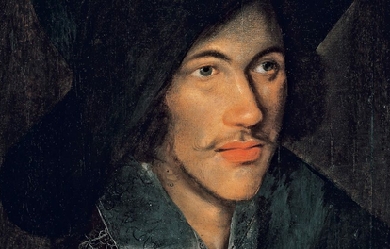

John Donne (between 24 January and 19 June 1572 – 31 March 1631) was an English poet, satirist, lawyer and priest. He is considered the pre-eminent representative of the metaphysical poets. His works are noted for their strong, sensual style and include sonnets, love poetry, religious poems, Latin translations, epigrams, elegies, songs, satires and sermons. His poetry is noted for its vibrancy of language and inventiveness of metaphor, especially compared to that of his contemporaries. Donne's style is characterised by abrupt openings and various paradoxes, ironies and dislocations. These features, along with his frequent dramatic or everyday speech rhythms, his tense syntax and his tough eloquence, were both a reaction against the smoothness of conventional Elizabethan poetry and an adaptation into English of European baroque and mannerist techniques. His early career was marked by poetry that bore immense knowledge of British society and he met that knowledge with sharp criticism. Another important theme in Donne’s poetry is the idea of true religion, something that he spent much time considering and theorising about. He wrote secular poems as well as erotic and love poems. He is particularly famous for his mastery of metaphysical conceits. Despite his great education and poetic talents, Donne lived in poverty for several years, relying heavily on wealthy friends. He spent much of the money he inherited during and after his education on womanising, literature, pastimes, and travel. In 1601, Donne secretly married Anne Moore, with whom he had twelve children. In 1615, he became an Anglican priest, although he did not want to take Anglican orders. He did so because King James I persistently ordered it. In 1621, he was appointed the Dean of St Paul's Cathedral in London. He also served as a member of parliament in 1601 and in 1614. Early life Donne was born in London, into a Roman Catholic family when practice of that religion was illegal in England. Donne was the third of six children. His father, also named John Donne, was of Welsh descent and a warden of the Ironmongers Company in the City of London. Donne's father was a respected Roman Catholic who avoided unwelcome government attention out of fear of persecution. Donne's father died in 1576, leaving his wife, Elizabeth Heywood, the responsibility of raising their children. Elizabeth was also from a recusant Roman Catholic family, the daughter of John Heywood, the playwright, and sister of the Reverend Jasper Heywood, a Jesuit priest and translator. She was a great-niece of the Roman Catholic martyr Thomas More. This tradition of martyrdom would continue among Donne’s closer relatives, many of whom were executed or exiled for religious reasons. Donne was educated privately; however, there is no evidence to support the popular claim that he was taught by Jesuits. Donne's mother married Dr. John Syminges, a wealthy widower with three children, a few months after Donne's father died. Two more of his sisters, Mary and Katherine, died in 1581. Donne's mother, who had lived in the Deanery after Donne became Dean of St. Paul's, survived him, dying in 1632 Donne was a student at Hart Hall, now Hertford College, Oxford, from the age of 11. After three years at Oxford he was admitted to the University of Cambridge, where he studied for another three years. He was unable to obtain a degree from either institution because of his Catholicism, since he could not take the Oath of Supremacy required of graduates. In 1591 he was accepted as a student at the Thavies Inn legal school, one of the Inns of Chancery in London. On 6 May 1592 he was admitted to Lincoln’s Inn, one of the Inns of Court. His brother Henry was also a university student prior to his arrest in 1593 for harbouring a Catholic priest, William Harrington, whom Henry betrayed under torture. Harrington was tortured on the rack, hanged until not quite dead, then was subjected to disembowelment. Henry Donne died in Newgate prison of bubonic plague, leading John Donne to begin questioning his Catholic faith. During and after his education, Donne spent much of his considerable inheritance on women, literature, pastimes and travel. Although there is no record detailing precisely where he travelled, it is known that he travelled across Europe and later fought with the Earl of Essex and Sir Walter Raleigh against the Spanish at Cadiz (1596) and the Azores (1597) and witnessed the loss of the Spanish flagship, the San Felipe. According to Izaak Walton, who wrote a biography of Donne in 1658: ... he returned not back into England till he had stayed some years, first in Italy, and then in Spain, where he made many useful observations of those countries, their laws and manner of government, and returned perfect in their languages. —Izaak Walton By the age of 25 he was well prepared for the diplomatic career he appeared to be seeking. He was appointed chief secretary to the Lord Keeper of the Great Seal, Sir Thomas Egerton, and was established at Egerton’s London home, York House, Strand close to the Palace of Whitehall, then the most influential social centre in England. Marriage to Anne More During the next four years, he fell in love with Egerton's niece Anne More. They were married just before Christmas in 1601, against the wishes of both Egerton and George More, who was Lieutenant of the Tower and Anne's father. This wedding ruined Donne's career and earned him a short stay in Fleet Prison, along with Samuel Brooke, who married them, and the man who acted as a witness to the wedding. Donne was released when the marriage was proven valid, and he soon secured the release of the other two. Walton tells us that when Donne wrote to his wife to tell her about losing his post, he wrote after his name: John Donne, Anne Donne, Un-done. It was not until 1609 that Donne was reconciled with his father-in-law and received his wife's dowry. After his release, Donne had to accept a retired country life in Pyrford, Surrey. Over the next few years, he scraped a meagre living as a lawyer, depending on his wife’s cousin Sir Francis Wolly to house him, his wife, and their children. Because Anne Donne bore a new baby almost every year, this was a very generous gesture. Though he practised law and may have worked as an assistant pamphleteer to Thomas Morton, Donne was in a constant state of financial insecurity, with a growing family to provide for. Anne bore twelve children in sixteen years of marriage (including two stillbirths—their eighth and then, in 1617, their last child); indeed, she spent most of her married life either pregnant or nursing. The ten surviving children were Constance, John, George, Francis, Lucy (named after Donne's patroness Lucy, Countess of Bedford, her godmother), Bridget, Mary, Nicholas, Margaret, and Elizabeth. Francis, Nicholas, and Mary died before they were ten. In a state of despair, Donne noted that the death of a child would mean one less mouth to feed, but he could not afford the burial expenses. During this time, Donne wrote, but did not publish, Biathanatos, his defence of suicide. His wife died on 15 August 1617, five days after giving birth to their twelfth child, a still-born baby. Donne mourned her deeply, and wrote of his love and loss in his 17th Holy Sonnet. Career and later life Donne was elected as Member of Parliament for the constituency of Brackley in 1602, but this was not a paid position. The fashion for coterie poetry of the period gave him a means to seek patronage and many of his poems were written for wealthy friends or patrons, especially Sir Robert Drury, who came to be Donne's chief patron in 1610. Donne wrote the two Anniversaries, An Anatomy of the World (1611) and Of the Progress of the Soul, (1612), for Drury. In 1610 and 1611 he wrote two anti-Catholic polemics: Pseudo-Martyr and Ignatius his Conclave. Although James was pleased with Donne's work, he refused to reinstate him at court and instead urged him to take holy orders. At length, Donne acceded to the King's wishes and in 1615 was ordained into the Church of England. Donne was awarded an honorary doctorate in divinity from Cambridge in 1615 and became a Royal Chaplain in the same year, and was made a Reader of Divinity at Lincoln's Inn in 1616. In 1618 he became chaplain to Viscount Doncaster, who was on an embassy to the princes of Germany. Donne did not return to England until 1620. In 1621 Donne was made Dean of St Paul's, a leading (and well-paid) position in the Church of England and one he held until his death in 1631. During his period as Dean his daughter Lucy died, aged eighteen. In late November and early December 1623 he suffered a nearly fatal illness, thought to be either typhus or a combination of a cold followed by a period of fever. During his convalescence he wrote a series of meditations and prayers on health, pain, and sickness that were published as a book in 1624 under the title of Devotions upon Emergent Occasions. One of these meditations, Meditation XVII, later became well known for its phrase "for whom the bell tolls" and the statement that "no man is an island". In 1624 he became vicar of St Dunstan-in-the-West, and 1625 a prolocutor to Charles I. He earned a reputation as an eloquent preacher and 160 of his sermons have survived, including the famous Death’s Duel sermon delivered at the Palace of Whitehall before King Charles I in February 1631. Death It is thought that his final illness was stomach cancer, although this has not been proven. He died on 31 March 1631 having written many poems, most only in manuscript. Donne was buried in old St Paul's Cathedral, where a memorial statue of him was erected (carved from a drawing of him in his shroud), with a Latin epigraph probably composed by himself. Donne's monument survived the 1666 fire, and is on display in the present building. Writings Early poetry Donne's earliest poems showed a developed knowledge of English society coupled with sharp criticism of its problems. His satires dealt with common Elizabethan topics, such as corruption in the legal system, mediocre poets, and pompous courtiers. His images of sickness, vomit, manure, and plague reflected his strongly satiric view of a world populated by all the fools and knaves of England. His third satire, however, deals with the problem of true religion, a matter of great importance to Donne. He argued that it was better to examine carefully one's religious convictions than blindly to follow any established tradition, for none would be saved at the Final Judgment, by claiming "A Harry, or a Martin taught [them] this." Donne's early career was also notable for his erotic poetry, especially his elegies, in which he employed unconventional metaphors, such as a flea biting two lovers being compared to sex. In Elegy XIX: To His Mistress Going to Bed, he poetically undressed his mistress and compared the act of fondling to the exploration of America. In Elegy XVIII, he compared the gap between his lover's breasts to the Hellespont. Donne did not publish these poems, although did allow them to circulate widely in manuscript form. ... any mans death diminishes me, because I am involved in Mankinde; And therefore never send to know for whom the bell tolls; It tolls for thee.. Some have speculated that Donne's numerous illnesses, financial strain, and the deaths of his friends all contributed to the development of a more somber and pious tone in his later poems. The change can be clearly seen in "An Anatomy of the World" (1611), a poem that Donne wrote in memory of Elizabeth Drury, daughter of his patron, Sir Robert Drury of Hawstead, Suffolk. This poem treats Elizabeth's demise with extreme gloominess, using it as a symbol for the Fall of Man and the destruction of the universe. The poem "A Nocturnal upon S. Lucy's Day, Being the Shortest Day", concerns the poet's despair at the death of a loved one. In it Donne expresses a feeling of utter negation and hopelessness, saying that "I am every dead thing...re-begot / Of absence, darkness, death." This famous work was probably written in 1627 when both Donne's friend Lucy, Countess of Bedford, and his daughter Lucy Donne died. Three years later, in 1630, Donne wrote his will on Saint Lucy's day (13 December), the date the poem describes as "Both the year's, and the day's deep midnight." The increasing gloominess of Donne's tone may also be observed in the religious works that he began writing during the same period. His early belief in the value of scepticism now gave way to a firm faith in the traditional teachings of the Bible. Having converted to the Anglican Church, Donne focused his literary career on religious literature. He quickly became noted for his sermons and religious poems. The lines of these sermons would come to influence future works of English literature, such as Ernest Hemingway's For Whom the Bell Tolls, which took its title from a passage in Meditation XVII of Devotions upon Emergent Occasions, and Thomas Merton’s No Man is an Island, which took its title from the same source. Towards the end of his life Donne wrote works that challenged death, and the fear that it inspired in many men, on the grounds of his belief that those who die are sent to Heaven to live eternally. One example of this challenge is his Holy Sonnet X, Death Be Not Proud, from which come the famous lines “Death, be not proud, though some have called thee / Mighty and dreadful, for thou art not so.” Even as he lay dying during Lent in 1631, he rose from his sickbed and delivered the Death's Duel sermon, which was later described as his own funeral sermon. Death’s Duel portrays life as a steady descent to suffering and death, yet sees hope in salvation and immortality through an embrace of God, Christ and the Resurrection. Style His work has received much criticism over the years, especially concerning his metaphysical form. Donne is generally considered the most prominent member of the Metaphysical poets, a phrase coined in 1781 by the critic Dr Johnson, following a comment on Donne by the poet John Dryden. Dryden had written of Donne in 1693: "He affects the metaphysics, not only in his satires, but in his amorous verses, where nature only should reign; and perplexes the minds of the fair sex with nice speculations of philosophy, when he should engage their hearts, and entertain them with the softnesses of love." In Life of Cowley (from Samuel Johnson's 1781 work of biography and criticism Lives of the Most Eminent English Poets), Johnson refers to the beginning of the seventeenth century in which there "appeared a race of writers that may be termed the metaphysical poets". Donne's immediate successors in poetry therefore tended to regard his works with ambivalence, with the Neoclassical poets regarding his conceits as abuse of the metaphor. However he was revived by Romantic poets such as Coleridge and Browning, though his more recent revival in the early twentieth century by poets such as T. S. Eliot and critics like F R Leavis tended to portray him, with approval, as an anti-Romantic. Donne's work suggests a healthy appetite for life and its pleasures, while also expressing deep emotion. He did this through the use of conceits, wit and intellect—as seen in the poems "The Sun Rising" and "Batter My Heart". Donne is considered a master of the metaphysical conceit, an extended metaphor that combines two vastly different ideas into a single idea, often using imagery. An example of this is his equation of lovers with saints in "The Canonization". Unlike the conceits found in other Elizabethan poetry, most notably Petrarchan conceits, which formed clichéd comparisons between more closely related objects (such as a rose and love), metaphysical conceits go to a greater depth in comparing two completely unlike objects. One of the most famous of Donne's conceits is found in "A Valediction: Forbidding Mourning" where he compares two lovers who are separated to the two legs of a compass. Donne's works are also witty, employing paradoxes, puns, and subtle yet remarkable analogies. His pieces are often ironic and cynical, especially regarding love and human motives. Common subjects of Donne's poems are love (especially in his early life), death (especially after his wife's death), and religion. John Donne's poetry represented a shift from classical forms to more personal poetry. Donne is noted for his poetic metre, which was structured with changing and jagged rhythms that closely resemble casual speech (it was for this that the more classical-minded Ben Jonson commented that "Donne, for not keeping of accent, deserved hanging"). Some scholars believe that Donne's literary works reflect the changing trends of his life, with love poetry and satires from his youth and religious sermons during his later years. Other scholars, such as Helen Gardner, question the validity of this dating—most of his poems were published posthumously (1633). The exception to these is his Anniversaries which were published in 1612 and Devotions upon Emergent Occasions published in 1624. His sermons are also dated, sometimes specifically by date and year. Legacy Donne is commemorated as a priest in the calendar of the Church of England and in the Calendar of Saints of the Evangelical Lutheran Church in America on 31 March. Sylvia Plath, interviewed on BBC Radio in late 1962, said the following about a book review of her collection of poems titled The Colossus that had been published in the United Kingdom two years earlier: "I remember being appalled when someone criticised me for beginning just like John Donne but not quite managing to finish like John Donne, and I felt the weight of English literature on me at that point." The memorial to Donne, modelled after the engraving pictured above, was one of the few such memorials to survive the Great Fire of London in 1666 and now appears in St Paul's Cathedral where Donne is buried. Donne in literature Donne has appeared in several works of literature: * In Margaret Edson's Pulitzer prize-winning play Wit (1999), the main character, a professor of 17th century poetry specialising in Donne, is dying of cancer. The play was adapted for the HBO film Wit starring Emma Thompson. * Donne's Songs and Sonnets feature in The Calligrapher (2003), a novel by Edward Docx. * In the 2006 novel The Meaning of Night by Michael Cox, Donne's works are frequently quoted. * Donne appears, along with his wife Anne and daughter Pegge, in the award-winning novel Conceit (2007) by Mary Novik. * Joseph Brodsky has a poem called "Elegy for John Donne". * The love story of Donne and Anne More is the subject of Maeve Haran's 2010 historical novel The Lady and the Poet. * An excerpt from "Meditation 17 Devotions Upon Emergent Occasions" serves as the opening for Ernest Hemingway's For Whom The Bell Tolls. * Marilynne Robinson's Pulitzer prize-winning novel Gilead makes several references to Donne's work. * Donne is the favourite poet of Dorothy Sayers' fictional detective Lord Peter Wimsey, and the Wimsey books include numerous quotations from, and allusions to, his work. * Donne's poem 'A Fever' (incorrectly called 'The Fever') is mentioned in the penultimate paragraph of the novel "The Silence of the Lambs" by Thomas Harris. * Edmund "Bunny" Corcoran writes a paper on Donne in Donna Tartt's novel The Secret History, in which he ties together Donne and Izaak Walton with help of an imaginary philosophy called "Metahemeralism". * Donne plays a significant role in Christie Dickason's The Noble Assassin (2011), a novel based on the life of Donne's patron and putative lover, Lucy Russell, Countess of Bedford. References Wikipedia - http://en.wikipedia.org/wiki/John_Donne
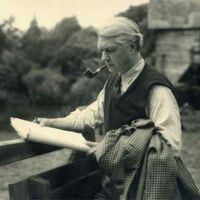
John Drinkwater (1 June 1882 – 25 March 1937) was an English poet and dramatist. Drinkwater was born in Leytonstone, London, and worked as an insurance clerk. In the period immediately before the First World War he was one of the group of poets associated with the Gloucestershire village of Dymock, along with Rupert Brooke and others. In 1919 he had his first major success with his play Abraham Lincoln. He followed it with others in a similar vein, including Mary Stuart and Oliver Cromwell. In 1924, his Lincoln play was adapted for a two-reel short film made by Lee DeForest and J. Searle Dawley featuring Frank McGlynn Sr. as Lincoln, and made in DeForest's Phonofilm sound-on-film process. He had published poetry since The Death of Leander in 1906; the first volume of his Collected Poems was published in 1923. He also compiled anthologies and wrote literary criticism (e.g. Swinburne: an estimate (1913)), and later became manager of Birmingham Repertory Theatre. He was married to Daisy Kennedy, the ex-wife of Benno Moiseiwitsch. Papers relating to John Drinkwater and collected by his stepdaughter are held at the University of Birmingham Special Collections. John Drinkwater made recordings in Columbia Records' International Educational Society Lecture series. They include Lecture 10 – a lecture on The Speaking of Verse (Four 78rpm sides, Cat no. D 40018-40019), and Lecture 70 John Drinkwater reading his own poems (Four 78rpm sides, Cat no. D 40140-40141). Death and commemoration Drinkwater died in London in 1937. He is buried at Piddington, Oxfordshire, where he had spent summer holidays as a child. A road in Leytonstone, formerly a 1960s council estate, is named after Drinkwater, as is a small development of modern houses in Piddington. References Wikipedia – en.wikipedia.org/wiki/John_Drinkwater_(playwright)

I am a confused being not knowing where I belong but I want to touch people with the arts and be touched myself I want to inspire and to be inspired I want to save and be saved and most of all I want to figure out my existence A quote from me although I haven't taken the time to look up if someone has already said this "Life has no logical reason." I have put my email up so for whatever reason if you'd like to email me. I will try my best to respond
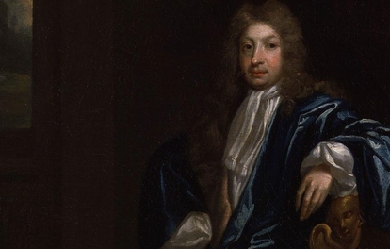
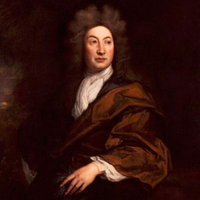
John Dryden (19 August [O.S. 9 August] 1631– 12 May [O.S. 1 May] 1700) was an English poet, literary critic, translator, and playwright who was made Poet Laureate in 1668. He is seen as dominating the literary life of Restoration England to such a point that the period came to be known in literary circles as the Age of Dryden. Walter Scott called him “Glorious John.” Early life Dryden was born in the village rectory of Aldwincle near Thrapston in Northamptonshire, where his maternal grandfather was Rector of All Saints. He was the eldest of fourteen children born to Erasmus Dryden and wife Mary Pickering, paternal grandson of Sir Erasmus Dryden, 1st Baronet (1553–1632) and wife Frances Wilkes, Puritan landowning gentry who supported the Puritan cause and Parliament. He was a second cousin once removed of Jonathan Swift. As a boy Dryden lived in the nearby village of Titchmarsh, Northamptonshire where it is likely that he received his first education. In 1644 he was sent to Westminster School as a King’s Scholar where his headmaster was Dr. Richard Busby, a charismatic teacher and severe disciplinarian. Having recently been re-founded by Elizabeth I, Westminster during this period embraced a very different religious and political spirit encouraging royalism and high Anglicanism. Whatever Dryden’s response to this was, he clearly respected the Headmaster and would later send two of his sons to school at Westminster. As a humanist public school, Westminster maintained a curriculum which trained pupils in the art of rhetoric and the presentation of arguments for both sides of a given issue. This is a skill which would remain with Dryden and influence his later writing and thinking, as much of it displays these dialectical patterns. The Westminster curriculum included weekly translation assignments which developed Dryden’s capacity for assimilation. This was also to be exhibited in his later works. His years at Westminster were not uneventful, and his first published poem, an elegy with a strong royalist feel on the death of his schoolmate Henry, Lord Hastings from smallpox, alludes to the execution of King Charles I, which took place on 30 January 1649, very near the school where Dr. Busby had first prayed for the King and then locked in his schoolboys to prevent their attending the spectacle. In 1650 Dryden went up to Trinity College, Cambridge. Here he would have experienced a return to the religious and political ethos of his childhood: the Master of Trinity was a Puritan preacher by the name of Thomas Hill who had been a rector in Dryden’s home village. Though there is little specific information on Dryden’s undergraduate years, he would most certainly have followed the standard curriculum of classics, rhetoric, and mathematics. In 1654 he obtained his BA, graduating top of the list for Trinity that year. In June of the same year Dryden’s father died, leaving him some land which generated a little income, but not enough to live on. Returning to London during The Protectorate, Dryden obtained work with Cromwell’s Secretary of State, John Thurloe. This appointment may have been the result of influence exercised on his behalf by his cousin the Lord Chamberlain, Sir Gilbert Pickering. At Cromwell’s funeral on 23 November 1658 Dryden processed with the Puritan poets John Milton and Andrew Marvell. Shortly thereafter he published his first important poem, Heroic Stanzas (1658), a eulogy on Cromwell’s death which is cautious and prudent in its emotional display. In 1660 Dryden celebrated the Restoration of the monarchy and the return of Charles II with Astraea Redux, an authentic royalist panegyric. In this work the interregnum is illustrated as a time of anarchy, and Charles is seen as the restorer of peace and order. Later life and career After the Restoration, as Dryden quickly established himself as the leading poet and literary critic of his day, he transferred his allegiances to the new government. Along with Astraea Redux, Dryden welcomed the new regime with two more panegyrics: To His Sacred Majesty: A Panegyric on his Coronation (1662) and To My Lord Chancellor (1662). These poems suggest that Dryden was looking to court a possible patron, but he was to instead make a living in writing for publishers, not for the aristocracy, and thus ultimately for the reading public. These, and his other nondramatic poems, are occasional—that is, they celebrate public events. Thus they are written for the nation rather than the self, and the Poet Laureate (as he would later become) is obliged to write a certain number of these per annum. In November 1662 Dryden was proposed for membership in the Royal Society, and he was elected an early fellow. However, Dryden was inactive in Society affairs and in 1666 was expelled for non-payment of his dues. On 1 December 1663 Dryden married the royalist sister of Sir Robert Howard—Lady Elizabeth. Dryden’s works occasionally contain outbursts against the married state but also celebrations of the same. Thus, little is known of the intimate side of his marriage. Lady Elizabeth bore three sons and outlived her husband. With the reopening of the theatres after the Puritan ban, Dryden wrote plays. His first play, The Wild Gallant, appeared in 1663 and was not successful but was still promising, and from 1668 on he was contracted to produce three plays a year for the King’s Company in which he became a shareholder. During the 1660s and '70s, theatrical writing was his main source of income. He led the way in Restoration comedy, his best-known work being Marriage à la Mode (1672), as well as heroic tragedy and regular tragedy, in which his greatest success was All for Love (1678). Dryden was never satisfied with his theatrical writings and frequently suggested that his talents were wasted on unworthy audiences. He thus was making a bid for poetic fame off-stage. In 1667, around the same time his dramatic career began, he published Annus Mirabilis, a lengthy historical poem which described the English defeat of the Dutch naval fleet and the Great Fire of London in 1666. It was a modern epic in pentameter quatrains that established him as the preeminent poet of his generation, and was crucial in his attaining the posts of Poet Laureate (1668) and historiographer royal (1670). When the Great Plague of London closed the theatres in 1665 Dryden retreated to Wiltshire where he wrote Of Dramatick Poesie (1668), arguably the best of his unsystematic prefaces and essays. Dryden constantly defended his own literary practice, and Of Dramatick Poesie, the longest of his critical works, takes the form of a dialogue in which four characters–each based on a prominent contemporary, with Dryden himself as 'Neander’—debate the merits of classical, French and English drama. The greater part of his critical works introduce problems which he is eager to discuss, and show the work of a writer of independent mind who feels strongly about his own ideas, ideas which demonstrate the breadth of his reading. He felt strongly about the relation of the poet to tradition and the creative process, and his best heroic play Aureng-zebe (1675) has a prologue which denounces the use of rhyme in serious drama. His play All for Love (1678) was written in blank verse, and was to immediately follow Aureng-Zebe. On 18 December 1679 he was attacked in Rose Alley near his home in Covent Garden by thugs hired by John Wilmot, 2nd Earl of Rochester, with whom he had a long-standing conflict. Dryden’s greatest achievements were in satiric verse: the mock-heroic Mac Flecknoe, a more personal product of his Laureate years, was a lampoon circulated in manuscript and an attack on the playwright Thomas Shadwell. Dryden’s main goal in the work is to “satirize Shadwell, ostensibly for his offenses against literature but more immediately we may suppose for his habitual badgering of him on the stage and in print.” It is not a belittling form of satire, but rather one which makes his object great in ways which are unexpected, transferring the ridiculous into poetry. This line of satire continued with Absalom and Achitophel (1681) and The Medal (1682). His other major works from this period are the religious poems Religio Laici (1682), written from the position of a member of the Church of England; his 1683 edition of Plutarch’s Lives Translated From the Greek by Several Hands in which he introduced the word biography to English readers; and The Hind and the Panther, (1687) which celebrates his conversion to Roman Catholicism. He wrote Britannia Rediviva celebrating the birth of a son and heir to the Catholic King and Queen on 10 June 1688. When later in the same year James II was deposed in the Glorious Revolution, Dryden’s refusal to take the oaths of allegiance to the new monarchs, William and Mary, left him out of favour at court. Thomas Shadwell succeeded him as Poet Laureate, and he was forced to give up his public offices and live by the proceeds of his pen. Dryden translated works by Horace, Juvenal, Ovid, Lucretius, and Theocritus, a task which he found far more satisfying than writing for the stage. In 1694 he began work on what would be his most ambitious and defining work as translator, The Works of Virgil (1697), which was published by subscription. The publication of the translation of Virgil was a national event and brought Dryden the sum of £1,400. His final translations appeared in the volume Fables Ancient and Modern (1700), a series of episodes from Homer, Ovid, and Boccaccio, as well as modernised adaptations from Geoffrey Chaucer interspersed with Dryden’s own poems. As a translator, he made great literary works in the older languages available to readers of English. Dryden died on 12 May 1700, and was initially buried in St. Anne’s cemetery in Soho, before being exhumed and reburied in Westminster Abbey ten days later. He was the subject of poetic eulogies, such as Luctus Brittannici: or the Tears of the British Muses; for the Death of John Dryden, Esq. (London, 1700), and The Nine Muses. A Royal Society of Arts blue plaque commemorates Dryden at 43 Gerrard Street in London’s Chinatown. He lived at 137 Long Acre from 1682 to 1686 and at 43 Gerrard Street from 1686 until his death. Reputation and influence Dryden was the dominant literary figure and influence of his age. He established the heroic couplet as a standard form of English poetry by writing successful satires, religious pieces, fables, epigrams, compliments, prologues, and plays with it; he also introduced the alexandrine and triplet into the form. In his poems, translations, and criticism, he established a poetic diction appropriate to the heroic couplet—Auden referred to him as “the master of the middle style”—that was a model for his contemporaries and for much of the 18th century. The considerable loss felt by the English literary community at his death was evident in the elegies written about him. Dryden’s heroic couplet became the dominant poetic form of the 18th century. Alexander Pope was heavily influenced by Dryden and often borrowed from him; other writers were equally influenced by Dryden and Pope. Pope famously praised Dryden’s versification in his imitation of Horace’s Epistle II.i: "Dryden taught to join / The varying pause, the full resounding line, / The long majestic march, and energy divine." Samuel Johnson summed up the general attitude with his remark that “the veneration with which his name is pronounced by every cultivator of English literature, is paid to him as he refined the language, improved the sentiments, and tuned the numbers of English poetry.” His poems were very widely read, and are often quoted, for instance, in Tom Jones and Johnson’s essays. Johnson also noted, however, that “He is, therefore, with all his variety of excellence, not often pathetic; and had so little sensibility of the power of effusions purely natural, that he did not esteem them in others. Simplicity gave him no pleasure.” Readers in the first half of the 18th century did not mind this too much, but later generations considered Dryden’s absence of sensibility a fault. One of the first attacks on Dryden’s reputation was by Wordsworth, who complained that Dryden’s descriptions of natural objects in his translations from Virgil were much inferior to the originals. However, several of Wordsworth’s contemporaries, such as George Crabbe, Lord Byron, and Walter Scott (who edited Dryden’s works), were still keen admirers of Dryden. Besides, Wordsworth did admire many of Dryden’s poems, and his famous “Intimations of Immortality” ode owes something stylistically to Dryden’s “Alexander’s Feast”. John Keats admired the “Fables”, and imitated them in his poem Lamia. Later 19th century writers had little use for verse satire, Pope, or Dryden; Matthew Arnold famously dismissed them as “classics of our prose.” He did have a committed admirer in George Saintsbury, and was a prominent figure in quotation books such as Bartlett’s, but the next major poet to take an interest in Dryden was T. S. Eliot, who wrote that he was 'the ancestor of nearly all that is best in the poetry of the eighteenth century’, and that ‘we cannot fully enjoy or rightly estimate a hundred years of English poetry unless we fully enjoy Dryden.’ However, in the same essay, Eliot accused Dryden of having a “commonplace mind.” Critical interest in Dryden has increased recently, but, as a relatively straightforward writer (William Empson, another modern admirer of Dryden, compared his “flat” use of language with Donne’s interest in the “echoes and recesses of words”) his work has not occasioned as much interest as Andrew Marvell’s or John Donne’s or Pope’s. Dryden is believed to be the first person to posit that English sentences should not end in prepositions because Latin sentences cannot end in prepositions. Dryden created the prescription against preposition stranding in 1672 when he objected to Ben Jonson’s 1611 phrase the bodies that those souls were frighted from, although he did not provide an explanation of the rationale that gave rise to his preference. The phrase “blaze of glory” is believed to have originated in Dryden’s 1686 poem The Hind and the Panther, referring to the throne of God as a “blaze of glory that forbids the sight.” Poetic style What Dryden achieved in his poetry was neither the emotional excitement of the early nineteenth-century romantics nor the intellectual complexities of the metaphysicals. His subject matter was often factual, and he aimed at expressing his thoughts in the most precise and concentrated manner. Although he uses formal structures such as heroic couplets, he tried to recreate the natural rhythm of speech, and he knew that different subjects need different kinds of verse. In his preface to Religio Laici he says that “the expressions of a poem designed purely for instruction ought to be plain and natural, yet majestic... The florid, elevated and figurative way is for the passions; for (these) are begotten in the soul by showing the objects out of their true proportion.... A man is to be cheated into passion, but to be reasoned into truth.” Translation style While Dryden had many admirers, he also had his share of critics, Mark Van Doren among them. Doren complained that in translating Vergil’s Aeneid, Dryden had added “a fund of phrases with which he could expand any passage that seemed to him curt”. Dryden did not feel such expansion was a fault, arguing that as Latin is a naturally concise language it cannot be duly represented by a comparable number of words in English. "He... recognized that Vergil 'had the advantage of a language wherein much may be comprehended in a little space’ (5:329–30). The 'way to please the best Judges... is not to Translate a Poet literally; and Virgil least of any other’ (5:329)" For example, take lines 789–795 of Book 2 when Aeneas sees and receives a message from the ghost of his wife, Creusa. iamque vale et nati serva communis amorem.' haec ubi dicta dedit, lacrimantem et multa volentem dicere deseruit, tenuisque recessit in auras. ter conatus ibi collo dare bracchia circum; ter frustra comprensa manus effugit imago, par levibus ventis volucrique simillima somno. sic demum socios consumpta nocte reviso Dryden translates it like this: I trust our common issue to your care.' She said, and gliding pass'd unseen in air. I strove to speak: but horror tied my tongue; And thrice about her neck my arms I flung, And, thrice deceiv'd, on vain embraces hung. Light as an empty dream at break of day, Or as a blast of wind, she rush'd away. Thus having pass'd the night in fruitless pain, I to my longing friends return again Dryden’s translation is based on presumed authorial intent and smooth English. In line 790 the literal translation of "haec ubi dicta dedit” is "when she gave these words.” But "she said” gets the point across, uses half the words, and makes for better English. A few lines later, with “ter conatus ibi collo dare bracchia circum; ter frustra comprensa manus effugit imago”, he alters the literal translation “Thrice trying to give arms around her neck; thrice the image grasped in vain fled the hands”, in order to fit it into meter and the emotion of the scene. In his own words, The way I have taken, is not so streight as Metaphrase, nor so loose as Paraphrase: Some things too I have omitted, and sometimes added of my own. Yet the omissions I hope, are but of Circumstances, and such as wou'd have no grace in English; and the Addition, I also hope, are easily deduc'd from Virgil's Sense. They will seem (at least I have the Vanity to think so), not struck into him, but growing out of him. (5:529) In a similar vein, Dryden writes in his Preface to the translation anthology Sylvae: Where I have taken away some of [the original authors’] Expressions, and cut them shorter, it may possibly be on this consideration, that what was beautiful in the Greek or Latin, would not appear so shining in the English; and where I have enlarg’d them, I desire the false Criticks would not always think that those thoughts are wholly mine, but that either they are secretly in the Poet, or may be fairly deduc’d from him; or at least, if both those considerations should fail, that my own is of a piece with his, and that if he were living, and an Englishman, they are such as he wou’d probably have written. Family On 1 December 1663 Dryden married Lady Elizabeth Howard (died 1714). The marriage was at St. Swithin’s, London, and the consent of the parents is noted on the license, though Lady Elizabeth was then about twenty-five. She was the object of some scandals, well or ill founded; it was said that Dryden had been bullied into the marriage by her brothers. A small estate in Wiltshire was settled upon them by her father. The lady’s intellect and temper were apparently not good; her husband was treated as an inferior by those of her social status. Both Dryden and his wife were warmly attached to their children. They had three sons: Charles (1666–1704), John (1668–1701), and Erasmus Henry (1669–1710). Lady Elizabeth Dryden survived her husband, but went insane soon after his death. Though some have historically claimed to be from the lineage of John Dryden, his three children had no children themselves. Selected works * Astraea Redux, 1660 * The Wild Gallant (comedy), 1663 * The Indian Emperour (tragedy), 1665 * Annus Mirabilis (poem), 1667 * The Tempest, or The Enchanted Island (comedy), 1667, an adaptation with William D’Avenant of Shakespeare’s The Tempest * Secret Love, or The Maiden Queen, 1667 * An Essay of Dramatick Poesie, 1668 * An Evening’s Love (comedy), 1668 * Tyrannick Love (tragedy), 1669 * The Conquest of Granada, 1670 * The Assignation, or Love in a Nunnery, 1672 * Marriage à la mode, 1672 * Amboyna, or the Cruelties of the Dutch to the English Merchants, 1673 * The Mistaken Husband (comedy), 1674 * Aureng-zebe, 1675 * All for Love, 1678 * Oedipus (heroic drama), 1679, an adaptation with Nathaniel Lee of Sophocles’ Oedipus * Absalom and Achitophel, 1681 * The Spanish Fryar, 1681 * Mac Flecknoe, 1682 * The Medal, 1682 * Religio Laici, 1682 * Threnodia Augustalis, 1685 * The Hind and the Panther, 1687 * A Song for St. Cecilia’s Day, 1687 * Britannia Rediviva, 1688, written to mark the birth of a Prince of Wales. * Epigram on Milton, 1688 * Amphitryon, 1690 * Don Sebastian (play), 1690 * Creator Spirit, by whose aid, 1690. Translation of Rabanus Maurus’ Veni Creator Spiritus * King Arthur, 1691 * Cleomenes, 1692 * Love Triumphant, 1694 * The Works of Virgil, 1697 * Alexander’s Feast, 1697 * Fables, Ancient and Modern, 1700 * The Art of Satire * To the Memory of Mr. Oldham, 1684 References Wikipedia—https://en.wikipedia.org/wiki/John_Dryden
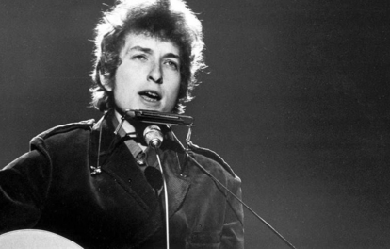
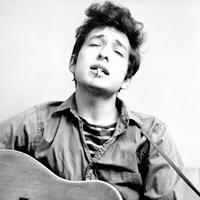
Bob Dylan (born Robert Allen Zimmerman; May 24, 1941) is an American musician, singer-songwriter, artist, and writer. He has been an influential figure in popular music and culture for more than five decades. Much of his most celebrated work dates from the 1960s when he was an informal chronicler and a seemingly reluctant figurehead of social unrest. A number of Dylan's early songs, such as “Blowin’ in the Wind” and “The Times They Are a-Changin”, became anthems for the US civil rights and anti-war movements. Leaving behind his initial base in the culture of the folk music revival, Dylan’s six-minute single “Like a Rolling Stone” radically altered the parameters of popular music in 1965. His recordings employing electric instruments attracted denunciation and criticism from others in the folk movement.

I am a very interesting person. I have been through hell and back, but I have decided to continuously go forward. I have been abused sexually, physically, and emotionally and I am a living testimony that can testify as to how a person can come out of any situation! Email me sometime to find out more questions or feel free to leave comments on my poems and entries. Thanks in advance!!
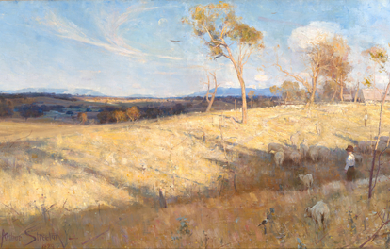

Edward George Dyson (4 March 1865– 22 August 1931) was an Australian journalist, poet, playwright and short story writer. He was the elder brother of talented illustrators Will Dyson and Ambrose Dyson. At 19, he began writing verse and, a few years later, embarked on a life of freelance journalism which lasted until his death. In 1896 he published a volume of poems, Rhymes from the Mines and, in 1898, the first collection of his short stories, Below and On Top.


Sydney Thompson Dobell (5 April 1824– 22 August 1874) was an English poet and critic, and a member of the so-called Spasmodic school. He was born at Cranbrook, Kent. His father, John Dobell, was a wine merchant, his mother a daughter of Samuel Thompson (1766–1837), a London political reformer. The family moved to Cheltenham when Dobell was twelve years old. He was educated privately, and never attended either school or university. He refers to this in some lines on Cheltenham College in imitation of Chaucer, written in his eighteenth year. After a five-year engagement he married, in 1844, Emily Fordham, a lady of good family. Acquaintance with James Stansfeld (subsequently Sir James Stansfeld) and with the Birmingham preacher-politician George Dawson fed the young enthusiast’s ardour for the liberalism of the day, and later led to the foundation of the Society of the Friends of Italy.

About H.D's Life and Career—An Essay by Bonnie Kime Scott Having rejected Victorian norms for modern experiments, H. D. repeatedly launched out from instructors found among the early canonized male modernists. She developed new lyric, mythic, and mystical forms in poetry and prose, and an alternative bisexual lifestyle that were little appreciated until the 1980s. Her literary contacts included Ezra Pound, Marianne Moore, William Carlos Williams, Ford Madox Ford, May Sinclair, Dorothy Richardson, Richard Aldington, Bryher, D. H. Lawrence, T. S. Eliot, Djuna Barnes, Gertrude Stein, Amy Lowell, Norman Douglas, Edith Sitwell, and Elizabeth Bowen. She was the literary editor of the Egoist (1916-1917), and admired the work of James Joyce and Virginia Woolf. Younger poets like Robert Duncan, Allen Ginsberg, May Sarton, and Denise Levertov took her as a mentor. H. D.'s literary papers are at Beinecke Library, Yale University. Autobiographies H. D. was born into the Moravian community of her artistic, musical mother, Helen (Wolle), in Bethlehem, Pennsylvania, and reared in Upper Darby, a Philadelphia suburb convenient to the University of Pennsylvania. Her astronomer father, Charles, was director of the Flower Observatory there. The Gift (written 1941-1944; published 1982) is cast in the inquiring voice of a child, who is cognizant of several generations of her family, and of her own dreams and fantasies. Her grandmother ultimately bestows a sense of her self-enabling heritage or "gift," and its mystical connection to the Moravians. Mystical access to the past through visions and the reading of "signets"--signs or heiroglyphs requiring patient deciphering--is essential to all of H. D.'s autobiographical writing. H.D.'s autobiographical writings from the middle years of her life are invaluable to the study of the gendered politics of experimental modernism, and the place of the female analysand in psychoanalysis. Ezra Pound entered her life while she was still a schoolgirl in Pennsylvania. In verses written for her, Pound gave her the persona of the "dryad," which persisted among her many self-concepts. They were twice engaged. Barbara Guest has suggested that his tutelage interfered with her studies at Bryn Mawr, which she quit in her second year. She did meet another as yet undeclared poet, Marianne Moore, while there (1904-1906). H. D. joined the same literary circles Pound traveled in when she moved to London in 1911. In a famous incident of 1913, he sent some of her verse to Harriet Monroe's Poetry Magazine, appending the signature "H.D., Imagiste." They served as models of the new poetry he was promoting. End to Torment: A Memoir of Ezra Pound by H. D. (written 1958; published 1979) explores this relationship. With Bid Me to Live (written 1933-1950, published 1960), H. D. writes herself out of what Rachel Blau DuPlessis has called "romantic thralldom" with two other literary men. She married the British poet, Richard Aldington, in 1913. Having enlisted in World War I, his fictional counterpart called for her sustaining letters to the front, yet resented her sharing verses with "Rico," the D. H. Lawrence counterpart, and flaunted his infidelities. Lawrence had a charismatic effect upon H. D. during the war years in London, but discouraged her creation of male subjects in her poetry, and objected to her relationship with Cecil Grey, the painter whom she joined in Cornwall. Grey became the father of her only surviving child, Frances Perdita Aldington (born 1919). H. D. had been anguished over the still-birth of a daughter fathered by Aldington in 1915, and the death of her brother Gilbert at the front. Bid Me to Live was part of a "madrigal cycle," including also Paint it To-Day and Asphodel (neither yet fully published). All of these works intertwined the painful demands of war and love relationships, as does the brilliant long poem, Trilogy (written 1944-1946), with its images of rebirth taken from classical, Egyptian and Christian sources. Tribute to Freud (written 1944; published gradually from 1945-1985) offers a third creative re-vision of male-inspired paradigms. H. D. was analyzed by Freud in 1933 and 1934, in an attempt to overcome writer's block. She also underwent analysis with Hans Sachs in the 1930s, with Erich Heydt in the 1950s, and was treated with intervenous shock therapy, following a major breakdown in 1946. Freud encouraged her to write straight history to breakout of the personal crisis she experienced during World War I. With Bid Me to Live she felt she was escaping also from the influence of psychoanalysis; she did revise Freud's role as analyst to something more like a medium. Spiritualism became an overriding interest in the 1940s. Communication with the dead and projections from another realm were regular tropes in her writing, including her last writing, Hermetic Definition. Bisexuality H.D.'s troubled alliance with Pound was mingled with her love of Frances Josepha Gregg, a student at the Pennsylvania Academy of Fine Arts, and the recipient of some of her earliest poems. Gregg and her mother were H. D.'s companions on the 1911 trip to London. Prefiguring other bisexual triangles she would involve herself in, H. D. planned to accompany Gregg on her honeymoon, but was prevented from doing so by Pound. The strains between lesbian and heterosexual attractions, experienced over the Gregg relationship, entered into H. D.'s novel HERmione (written 1927, the year before Radclyffe Hall's lesbian novel, The Well of Loneliness, was the subject of an obscenity trial; published 1981). The novelist and editor Bryher (Winnifred Ellerman, an heiress to a shipping fortune), was the most significant companion of her mature life. Their relationship survived until H. D.'s death in 1961, spanning Bryher's two marriages of convenience to Robert McAlmon and Kenneth Macpherson, in circumstances that included significant travel and residences mainly in London and Switzerland. H. D. has credited Bryher with saving her life during the final months of her pregnancy in 1919, when she was struck with influenza. Bryher and H. D. traveled to the Scilly Islands together in June 1919, for a month of idyllic companionship; they went to Greece (sailing by Lesbos) with H. D.'s mother in 1922, and traveled to Egypt the next year. The women made a creative trio with the artist and filmmaker Kenneth Macpherson from 1927 to 1932; Macpherson became H. D.'s lover, and Bryher's husband, and the married couple adopted H. D.'s daughter Perdita. Their collaborations included photomontages, the film journal Close Up, to which H. D. supplied poetry and reviews, and Borderline, a film in which H. D. starred with Paul Robeson. The project is one indication of H. D.'s literary connections to the Harlem Renaissance, and her attraction to the margins of modernism. Much of H.D.'s poetry published in the 1930s and 1940s appeared in Life and Letters Today, edited by Bryher. H.D. was well informed about contemporary theories of homosexuality, due both to her analysis by Freud, who pronounced her bisexual, and her friendship with sexologist Havelock Ellis, whom she met in 1919. But she was not limited to their views, particularly in HER. Her shift in interest to mother-daughter dynamics in Notes on Thought and Vision may have been a transference out of Freud's influence. However, Ellis failed to appreciate her revolutionary "bell jar" experiences of pregnancy and the unconscious, recorded in Notes on Thought and Vision, and his lack of enthusiasm may have discouraged her publishing it. Critical Repositioning and Feminist Criticism For many years H. D. was known chiefly for the stark, chiseled images and experimental rhythms of her earliest work, collected as Sea Garden (1916). This fit the imagist program of Ezra Pound. She also had a limited reputation as a classicist and translator of Greek. Feminist critics, led by Susan Stanford Friedman and Rachel Blau DuPlessis, have studied H.D.'s works for feminine lesbian, and bisexual discourses. Since the early 1980s H. D.'s epic and prose writing have received more attention, and work self-suppressed in her own lifetime has been recovered and studied. H. D.'s frequent recourse to the palimpsest can be seen as an escape from binary and hierarchical thinking associated with patriarchy. The term denotes a parchment that retains partially erased parts of earlier writings, which strain productively with new text. She titled a three-part story sequence Palimpsest (written 1923-1924), but the term also applies to her rewritings of her own selfhood in autobiographies, and to her rewritten myths. H. D. can be credited with anticipating the maternal semiotic of Julia Kristeva, and with giving a female voice to classical myths. Sandra Gilbert ("H. D.? Who Was She?," Contemporary Literature 24 [1983]: 496-511) suggests that she developed a "woman's mythology" in Trilogy, Helen in Egypt, and Hermetic Definition. Alicia Ostriker ("Thieves of Language," Signs 8, no. 1 [1982]: 68-90) includes H. D. among women poets who construct new myths to include their selves. H. D.'s Greek texts, culminating in Helen in Egypt, explore the divinity of the goddess, the sexually ecstatic Eleusinian mysteries, and the female version of patriarchal epics. A criticism from Lawrence S. Rainey ("Canon, Gender and Text," Representing Modern Texts, ed. George Bornstein, [1991]) is that in recent years H. D.'s work has been studied for the sake of content conducive to feminist solidarity, rather than aesthetic value. Yet this criticism neglects feminist critics' remarks on the formal devices of mythic mask, palimpsest, and return of the repressed, characteristic of life-writing cure, that moved H. D. beyond confinement to the divisive gender stereotypes of her day.

I have always been sincerely passionate for writing. Nothing quite beats a great word or metaphor. Poetry has become my escape in all situations, merely because I find it to be an outer body experience in which I cannot explain. I just recently began sharing my poetry because I felt that certain pieces of my work could help someone get through a tough time, or simply put them at ease and make them realize life is short and beautiful. At age 25, I am now devoting all the time and energy it takes to release my writing to all who appreciate it, and can grow from it. Writing is my passion, my hunger and my thirst and it can move me in a way I never thought possible.
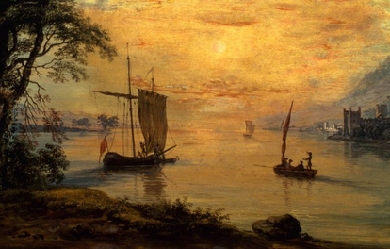

William Henry Davies or W. H. Davies (3 July 1871 – 26 September 1940) was a Welsh poet and writer. Davies spent a significant part of his life as a tramp or hobo, in the United Kingdom and United States, but became one of the most popular poets of his time. The principal themes in his work are observations about life's hardships, the ways in which the human condition is reflected in nature, his own tramping adventures and the various characters he met. Davies is usually considered one of the Georgian Poets, but much of his work is not typical in style or theme of the group. Early Life The son of an iron moulder, Davies was born at 6, Portland Street in the Pillgwenlly district of Newport, Monmouthshire, Wales, a busy port. He had an older brother, Francis Gomer Boase (who was considered "slow") and in 1874 his younger sister Matilda was born. In November 1874, when William was aged three, his father died. The following year his mother Mary Anne Davies remarried and became Mrs Joseph Hill. She agreed that care of the three children should pass to their paternal grandparents, Francis and Lydia Davies, who ran the nearby Church House Inn at 14, Portland Street. His grandfather Francis Boase Davies, originally from Cornwall, had been a sea captain. Davies was related to the famous British actor Sir Henry Irving (referred to as cousin Brodribb by the family); he later recalled that his grandmother referred to Irving as " the cousin who brought disgrace on us". Davies' grandmother was described, by a neighbour who remembered her, as wearing ".. pretty little caps, with bebe ribbon, tiny roses and puce trimmings". Writing in his Introduction to the 1943 Collected Poems of W. H. Davies, Osbert Sitwell recalled Davies telling him that, in addition to his grandparents and himself, his home consisted of "an imbecile brother, a sister ... a maidservant, a dog, a cat, a parrot, a dove and a canary bird." Sitwell also recounts that Davies' grandmother, a Baptist by denomination, was "of a more austere and religious turn of mind than her husband." In 1879 the family moved to Raglan Street, then later to Upper Lewis Street, from where William attended Temple School. In 1883 he moved to Alexandra Road School and the following year was arrested, as one of a gang of five schoolmates, and charged with stealing handbags. He was given twelve strokes of the birch. In 1885 Davies wrote his first poem entitled "Death". In his Poet's Pilgrimage (1918) Davies recounts the time when, at the age of 14, he was left with orders to sit with his dying grandfather. He missed the final moments of his grandfather's death as he was too engrossed in reading "a very interesting book of wild adventure". Delinquent to Supertramp Having finished school under the cloud of his theft he worked first for an ironmonger. In November 1886, his grandmother signed the papers for Davies to begin a five-year apprenticeship to a local picture-frame maker. Davies never enjoyed the craft, however, and never settled into any regular work. He was a difficult and somewhat delinquent young man, and made repeated requests to his grandmother to lend him the money to sail to America. When these were all refused, he eventually left Newport, took casual work and started to travel. The Autobiography of a Super-Tramp, published in 1908, covers his life in the USA between 1893 and 1899, including many adventures and characters from his travels as a drifter. During this period he crossed the Atlantic at least seven times, working on cattle ships. He travelled through many of the states, sometimes begging, sometimes taking seasonal work, but often ending up spending any savings on a drinking spree with a fellow traveller. He took advantage of the corrupt system of "boodle", in order to pass the winter in Michigan, by agreeing to be locked up in a series of different jails. Here, with his fellow tramps, Davies would enjoy the relative comfort of "card-playing, singing, smoking, reading, relating experiences and occasionally taking exercise or going out for a walk." At one stage, on his way to Memphis, Tennessee, he lay alone in a swamp for three days and nights suffering from malaria. The turning point in Davies' life came when, after a week of rambling in London, he spotted a newspaper story about the riches to be made in the Klondike and immediately set off to make his fortune in Canada. Attempting to jump a freight train at Renfrew, Ontario, on 20 March 1899, with fellow tramp Three-fingered Jack, he lost his footing and his right foot was crushed under the wheels of the train. The leg later had to be amputated below the knee and he wore a wooden leg thereafter. Davies' biographers have agreed that the significance of the accident should not be underestimated, even though Davies himself played down the story. Moult begins his biography with the incident and Stonesifer has suggested that this event, more than any other, led Davies to become a professional poet. Davies himself wrote of the accident: "I bore this accident with an outward fortitude that was far from the true state of my feelings. Thinking of my present helplessness caused me many a bitter moment, but I managed to impress all comers with a false indifference… I was soon home again, having been away less than four months; but all the wildness had been taken out of me, and my adventures after this were not of my own seeking, but the result of circumstances." Davies' view of his own disability was ambivalent. In his poem "The Fog", published in the 1913 Foliage, a blind man leads the poet through the fog, showing the reader that one who is handicapped in one domain may well have a considerable advantage in another. Poet He returned to Britain, living a rough life, particularly in London shelters and doss-houses, including the Salvation Army hostel in Southwark known as "The Ark" which he grew to despise. Fearing the contempt of his fellow tramps, he would often feign slumber in the corner of his doss-house, mentally composing his poems and only later committing them to paper in private. At one stage he borrowed money to have his poems printed on loose sheets of paper, which he then tried to sell door-to-door through the streets of residential London. When this enterprise failed, he returned to his lodgings and, in a fit of rage, burned all of the printed sheets in the fire. Davies self-published his first book of poetry, The Soul's Destroyer, in 1905, again by means of his own savings. It proved to be the beginning of success and a growing reputation. In order to even get the slim volume published, Davies had to forgo his allowance and live the life of a tramp for six months (with the first draft of the book hidden in his pocket), just to secure a loan of funds from his inheritance. When eventually published, the volume was largely ignored and he resorted to posting individual copies by hand to prospective wealthy customers chosen from the pages of Who's Who, asking them to send the price of the book, a half crown, in return. He eventually managed to sell 60 of the 200 copies printed. One of the copies was sent to Arthur Adcock, then a journalist with the Daily Mail. On reading the book, as he later wrote in his essay "Gods Of Modern Grub Street", Adcock said that he "recognised that there were crudities and even doggerel in it, there was also in it some of the freshest and most magical poetry to be found in modern books". He sent the price of the book and asked Davies to meet him. Adcock is still generally regarded as "the man who discovered Davies". The first trade edition of The Soul's Destroyer was published by Alston Rivers in 1907. A second edition followed in 1908 and a third in 1910. A 1906 edition, by Fifield, was advertised but has not been verified. Rural life in Kent On 12 October 1905 Davies met Edward Thomas, then literary critic for the Daily Chronicle in London, who was to do more to help him than anyone else. Thomas rented for Davies the tiny two-roomed "Stidulph's Cottage", in Egg Pie Lane, not far from his own home at Elses Farm near Sevenoaks in Kent. Davies moved to the cottage, from 6 Llanwern Street, Newport, via London, in the second week of February 1907. The cottage was "only two meadows off" from Thomas' own house. Thomas adopted the role of protective guardian for Davies, on one occasion even arranging for the manufacture, by a local wheelwright, of a makeshift replacement wooden leg, which was invoiced to Davies as "a novelty cricket bat". In 1907, the manuscript of The Autobiography of a Super-Tramp drew the attention of George Bernard Shaw, who agreed to write a preface (largely through the concerted efforts of his wife Charlotte). It was only because of Shaw that Davies' contract with the publishers was rewritten to allow the author to retain the serial rights, all rights after three years, royalties of fifteen per cent of selling price and a non-returnable advance of twenty five pounds. Davies was also to be given a say on the style of all illustrations, advertisement layouts and cover designs. The original publisher, Duckworth and Sons, refused to accept these demands and so the book was placed instead with London publisher Fifield. A number of anecdotes of Davies' time with the Thomas family in Kent are recounted in the brief account later published by Thomas' widow Helen. In 1911, Davies was awarded a Civil List Pension of £50, later increased to £100 and then again to £150. Davies started to spend more time in London and made many literary friends and acquaintances. Though averse to giving autographs himself, Davies began to make a collection of his own and was particularly keen to obtain that of D. H. Lawrence. Georgian poetry publisher Edward Marsh was able to secure an autograph and also invited Lawrence and wife-to-be Frieda to meet Davies on 28 July 1913. Lawrence was immediately captivated by Davies and later invited him to join them in Germany. Despite his early enthusiasm for Davies' work, however, Lawrence's opinion changed after reading Foliage and he commented after reading Nature Poems in Italy that the verses seemed "so thin, one can hardly feel them". By this time Davies had amassed a library of about fifty books in his cottage, mostly of 16th- and 17th-century poets, and including Shakespeare, Milton, Wordsworth, Byron, Burns, Shelley, Keats, Coleridge, Blake and Herrick. In December 1908 his essay "How It Feels To Be Out of Work", described by Stonesifer as "a rather pedestrian performance", appeared in the pages of The English Review. He continued to send other periodical articles out to editors, but without any success. Society life in London After lodging at a number of temporary addresses in Sevenoaks, Davies moved back to London early in 1914, settling eventually at 14 Great Russell Street in the Bloomsbury district, previously the residence of Charles Dickens. Here in a tiny two-room apartment, initially infested with mice and rats, and next door to rooms occupied by a noisy Belgian prostitute, he lived from early 1916 until 1921. It was during this time in London that Davies embarked on a series of public readings of his work, alongside such others as Hilaire Belloc and W. B. Yeats, impressing such fellow poets as Ezra Pound. He soon found that he was able to socialise with leading society figures of the day, including Lord Balfour and Lady Randolph Churchill. While in London Davies also became friendly with a number of artists, including Jacob Epstein, Harold and Laura Knight, Nina Hamnett, Augustus John, Harold Gilman, William Rothenstein, Walter Sickert, Sir William Nicholson and Osbert and Edith Sitwell. He enjoyed the society of literary men and their conversation, particularly in the rarefied atmosphere downstairs at the Café Royal. He would also meet regularly with W. H. Hudson, Edward Garrett and others at The Mont Blanc in Soho. In his poetry Davies drew extensively for material on his experiences with the seamier side of life, but also on his love of nature. By the time of his prominent place in the Edward Marsh Georgian Poetry series, he was an established figure. He is generally best known for the opening two lines of the poem "Leisure", first published in Songs Of Joy and Others in 1911: "What is this life if, full of care / We have no time to stand and stare..." In October 1917 his work was included in the anthology Welsh Poets: A Representative English selection from Contemporary Writers collated by A. G. Prys-Jones and published by Erskine Macdonald of London. In the last months of 1921, Davies moved to more comfortable quarters at 13 Avery Row, Brook Street, where he rented rooms from the Quaker poet Olaf Baker. He began to find prolonged work difficult, however, suffering from increased bouts of rheumatism and other ailments. Harlow (1993) lists a total of 14 BBC broadcasts of Davies reading his own work made between 1924 and 1940 (now held in the BBC broadcast archive) although none included his most famous work, "Leisure". Later Days, the 1925 sequel to The Autobiography of a Super-Tramp, describes the beginnings of Davies' career as a writer and his acquaintance with Belloc, Shaw and de la Mare, amongst many others. He became "the most painted literary man of his day", drawn and painted by Augustus John, Sir William Nicholson, Dame Laura Knight and Sir William Rothenstein. His head in bronze was the most successful of Epstein's smaller works. Honours, memorials and legacy In 1926 Davies was honoured with the degree of Doctor Litteris, honoris causa from the University of Wales. Davies returned to his native Newport in 1930, where a luncheon was held in his honour at the Westgate Hotel. His return, in September 1938, for the unveiling of the plaque in his honour, proved to be his last public appearance. A large collection of Davies manuscripts, including a copy of "Leisure", dated 8 May 1914, is held by the National Library of Wales. The collection includes a copy of "A Boy's Sorrow", an apparently unpublished poem of two eight-line stanzas relating to the death of a neighbour. Also included is a volume (c. 1916) containing autograph fair copies of 15 Davies poems, some of them apparently unpublished, submitted to James Guthrie (1874–1952) for publication by the Pear Tree Press as a collection entitled Quiet Streams, to which annotations have been added by Lord Kenyon. British writer Gerald Brenan (1894–1987) and his generation were influenced by Davies' Autobiography of a Super-Tramp. In 1951 Jonathan Cape published The Essential W. H. Davies, selected and with an introduction by Brian Waters, a young Gloucestershire poet and writer whose work Davies admired, who described him as "about the last of England's professional poets". The collection included The Autobiography of a Super-tramp, and extracts from Beggars, A Poet's Pilgrimage, Later Days, My Birds and My Garden, as well as over 100 poems arranged by publication period. Many of Davies' poems have been given a musical setting. "Money, O!" was set to music for piano, in G minor, by Michael Head - his 1929 Boosey & Hawkes collection also included settings for "The Likeness", "The Temper of a Maid", "Natures' Friend", "Robin Redbreast" and "A Great Time". There are also three songs by Sir Arthur Bliss - "Thunderstorms", "This Night", and "Leisure" - as well as "The Rain" for voice and piano, by Margaret Campbell Bruce, published in 1951 by J. Curwen and Sons. Experimental Irish folk group Dr Strangely Strange also sang and quoted from "Leisure" on their 1970 album Heavy Petting, with harmonium accompaniment. A musical adaptation of the same poem, with John Karvelas (vocals) and Nick Pitloglou (piano) and an animated film by Pipaluk Polanksi, may be found on YouTube. Also in 1970, Fleetwood Mac recorded "Dragonfly", a song with lyrics taken from Davies' 1927 poem, "The Dragonfly". The song was also recorded by English singer-songwriter and multi-instrumentalist Blake, for his 2011 album The First Snow. On 1 July 1971 a special First Day Cover, with a matching commemorative post-mark was issued by the UK Post Office to mark Davies' centenary. A controversial statue by Paul Bothwell-Kincaid, inspired by the poem "Leisure", was unveiled in Commercial Street, Newport in December 1990, to commemorate Davies' work, on the 50th anniversary of his death. The bronze head of Davies by Epstein, from January 1917, regarded by many as the most accurate artistic impression of Davies and a copy of which Davies owned himself, may be found at Newport Museum and Art Gallery (donated by Viscount Tredegar). In August 2010 the play Supertramp, Sickert and Jack the Ripper by Lewis Davies, concerning an imagined sitting by Davies for a portrait by Walter Sickert, premiered at the Edinburgh Festival. References Wikipedia—https://en.wikipedia.org/wiki/W._H._Davies

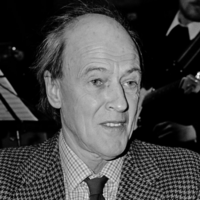
Roald Dahl was a British novelist, short story writer, poet, screenwriter, and fighter pilot. His books have sold over 200 million copies worldwide. Born in Wales to Norwegian parents, Dahl served in the Royal Air Force during the Second World War, in which he became a flying ace and intelligence officer, rising to the rank of acting wing commander. He rose to prominence in the 1940s with works for both children and adults and he became one of the world’s best-selling authors. He has been referred to as "one of the greatest storytellers for children of the 20th century". His awards for contribution to literature include the 1983 World Fantasy Award for Life Achievement, and the British Book Awards’ Children’s Author of the Year in 1990. In 2008, The Times placed Dahl 16th on its list of "The 50 greatest British writers since 1945".
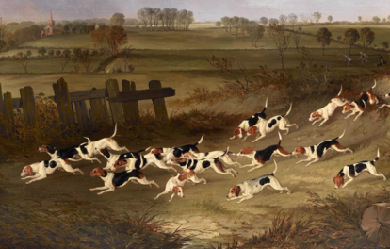
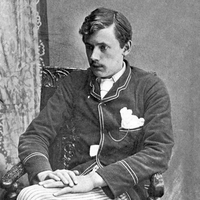
Ernest Christopher Dowson (2 August 1867– 23 February 1900) was an English poet, novelist, and short-story writer, often associated with the Decadent movement. He was born in Lee, London, in 1867. His great-uncle was Alfred Domett, a poet and politician who became Premier of New Zealand and had allegedly been the subject of Robert Browning’s poem “Waring.” Dowson attended The Queen’s College, Oxford, but left in March 1888 before obtaining a degree.


